GREYMOUTH GANDER
By Dan Govier
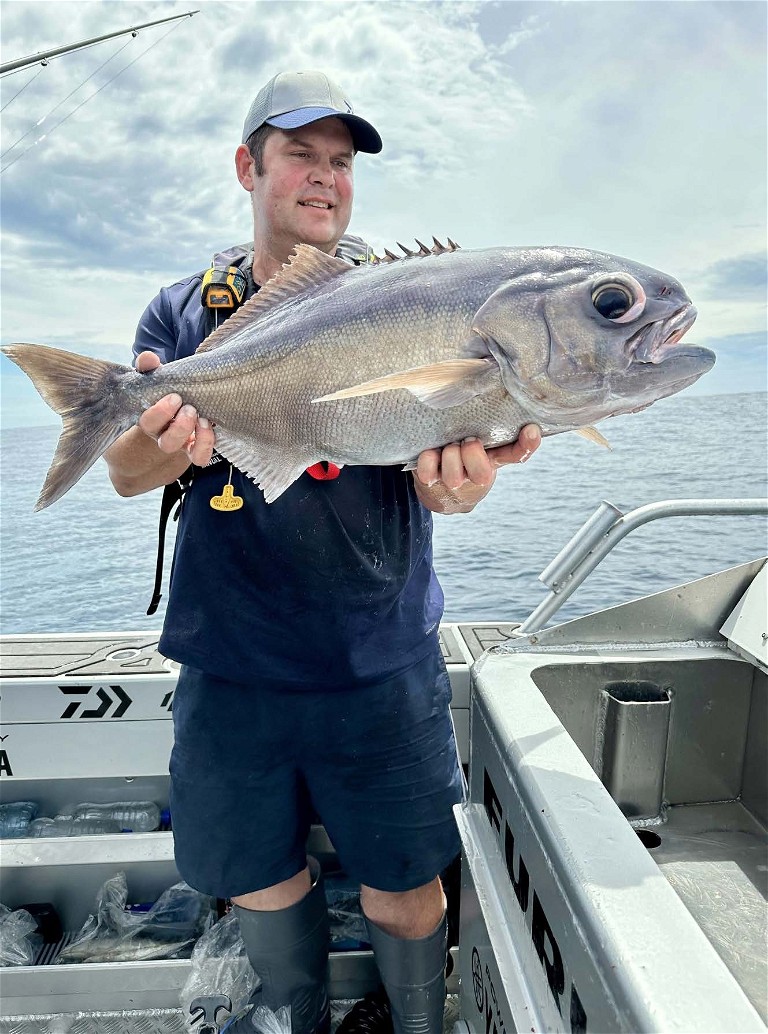
Greymouth is one of those special places in New Zealand, steeped in a history of mining, fishing, rain, and of course notorious bar crossings. Any trip to Greymouth for a fishing mission is always exciting; however, there is always a feeling of trepidation about what the bar is going to be like, both on the way out and back in. The Greymouth Bar is a very high-energy environment where the flow of the Grey River, which forms from many different rivers and lakes within a large catchment, meets the Tasman Sea. This river bar needs to be treated with caution and given the utmost respect to ensure a safe crossing for all onboard.
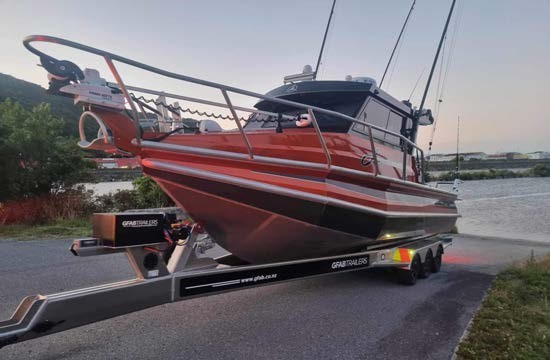
It was mid-January and, despite being in the middle of summer, Civil Defence had released a state of emergency warning with heavy rain due to hit the West Coast. This was not the ideal lead-up to our planned trip and it looked like the trip may not happen as a result of this latest forecast. However, as the weather arrived, all the rain fell south of Hokitika, and surprisingly Greymouth missed most of it. It was a few anxious days of watching rainfall levels, river flows and talking to locals in Greymouth as we got ready for the trip and waited until the last minute to make the call. Saturday morning arrived – the heavy rainfall warning had been lifted, there was not a lot of additional flow in the Grey River and the reports from locals were that the bar was good. So, with an everimproving forecast we pressed the green light, and the trip was on.
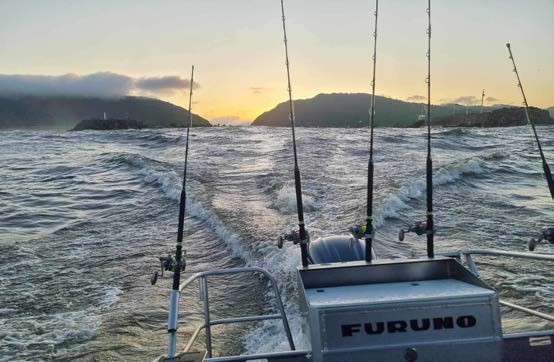
After the boat was loaded and we had everything we thought we would need, my good mate Pete Connolly and I put the boat on the back of the Ranger and drove down to Greymouth. Our third crew member was Leon Powell, who drove over from Christchurch via Arthur’s Pass.
I booked accommodation at the Top Ten campsite as it has plenty of parking for the boat and is always clean and tidy with very welcoming hosts. On arrival at the camp, we parked the boat and went to check out the bar conditions. It was very unusual to see no wind at the Greymouth Bar, but we were certainly not complaining, and we were confident the remaining swell would continue to ease out overnight for the crossing in the morning. After a few stories over dinner, it was time to get some sleep before the early start. The local bakery opens at 5am in Greymouth so it is a must-stop to grab a coffee and some food for the day.
“ …THERE IS ALWAYS A FEELING OF TREPIDATION ABOUT WHAT THE BAR IS GOING TO BE LIKE, BOTH ON THE WAY OUT AND BACK IN. ”
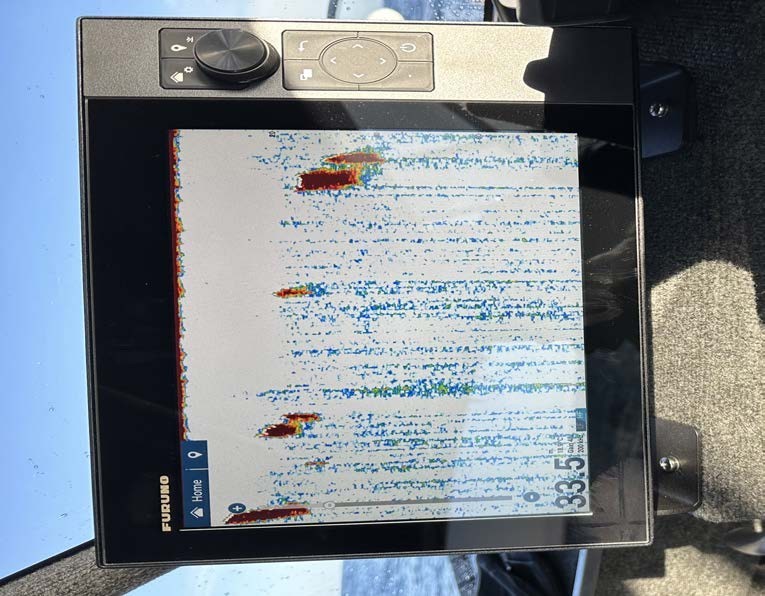
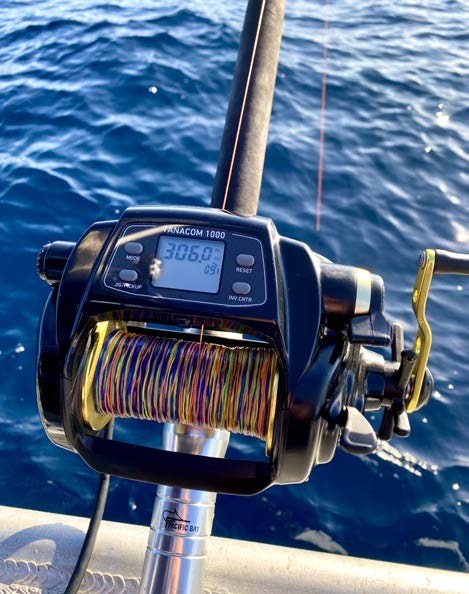
There’s something not many out-of-towners are aware of called the ‘Greymouth Barber’. The Barber is a katabatic wind that flows off the mountains and down the Grey Valley, funneling out of the river. With the wind comes fog and it is bitterly cold, even in the middle of summer. This morning was no different as we were greeted with 15 to 20 knots of wind coming down the river at the boat ramp. If you are not aware of it, you might think that fishing is off for the day, but it does ease as the land warms up and you get further away from shore.
The plan of attack was to run some lures for southern bluefin tuna and then head to the Hokitika Trench for some deepwater species. The albacore tuna fleet was almost straight out off Greymouth – approximately 20NM – and they had been picking up a few bluefin, so that was our first stop. I put up the outrigger poles at the boat ramp (made more difficult thanks to the Barber) and once everything was rigged, Leon backed us into the water for a nice safe launching. The boat ramp at Greymouth is very steep so you do need to be aware of that when backing bigger boats. It was nearly high tide, so the timing was great for the bar, and it also made it easy to get Leon onto the boat from the little jetty. Again, the Barber can make this difficult, but I find it is easier to come in from ‘upstream’, and let the wind fill up the cabin when approaching the jetty as you then have more control rather than coming in from ‘downstream’.
I lodged the trip report with Greymouth Maritime Radio on the VHF as we assessed the pattern of swells coming through the entrance. The swell had increased overnight but it was not breaking, and after a while of assessing the waves coming through it was certainly safe to cross the bar. As many people know, the Greymouth Bar can be a treacherous place, and I always tell my crew that if the bar is not good, even if we are in the river ready to go, I won’t cross. I would much rather be safe or wait a while to see if it eases with the tide rather than risk crossing – it’s just not worth it. Fortunately, I did not have to make that call this time and I eased us out over the bar.

“ IT WASN’T TOO LONG BEFORE THE TUNA FLEET APPEARED ON THE HORIZON… ”
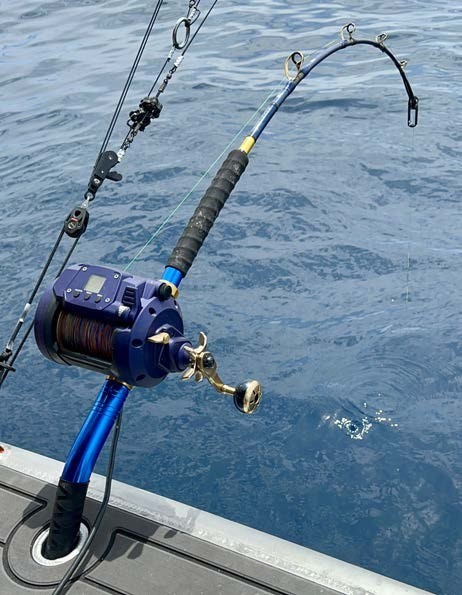
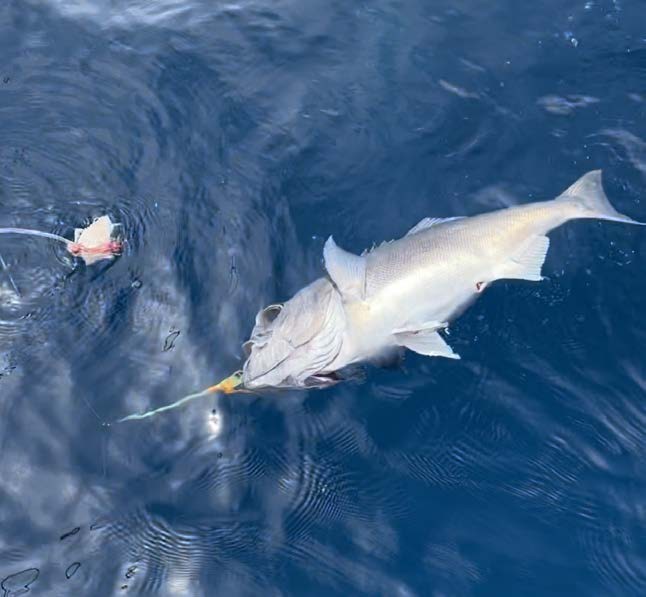
Once well clear of the bar, the tension eased and I started to enjoy the day. The sun was coming up, a low long swell from the west was present and the offshore wind made the run out relatively easy. It wasn’t too long before the tuna fleet appeared on the horizon and schools of fish started to show up on the Furuno in the top 50 metres of the water column. There were some good schools of bait and bigger tuna from the looks of it, so I slowed the boat back, dropped the riggers and started to get the tuna spread out. A combination of deep divers and surface lures was selected for our morning’s arsenal, and we soon had the gear out and settled into trying to find some fish.
The tuna boats were working a small area of fish and there were a lot there, too, by the sign on the sounder. These boats were chasing albacore tuna, but our target was southern bluefin. Southern bluefin tuna are attracting a lot of attention at the moment and the South Island is certainly starting to gain a reputation as a great fishery with plenty of fish being caught off Kaikoura, Fiordland and the West Coast. The lures we were running were on the larger end of the scale as we had our sights on bigger tuna, so I was not expecting to get too many albacore.
We managed one albacore for our efforts, and despite no bluefin, it was good fun to run the tuna gear on the new boat ahead of the winter bluefin fishery. The call was made just before lunch to pull the gear and steam south to the Hokitika Trench to try our luck down deep. Bluenose were the target as these are great eating and also a good challenge to catch. A deepwater species, bluenose have white flesh with a high oil content so they make superb table fare. These fish like deep water and are normally caught in water depths greater than 250 metres, often associated with reef structure or banks/dropoffs. Bluenose are a schooling fish – if you have good electronics and they are around, they can be easily seen.
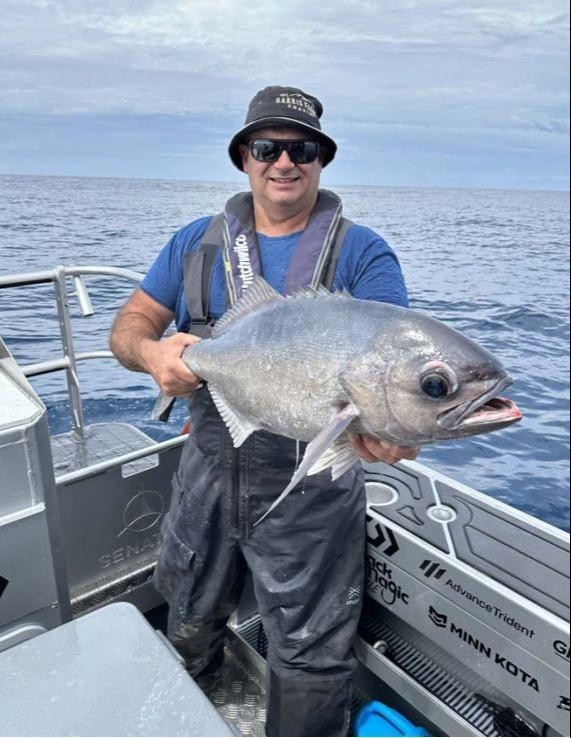
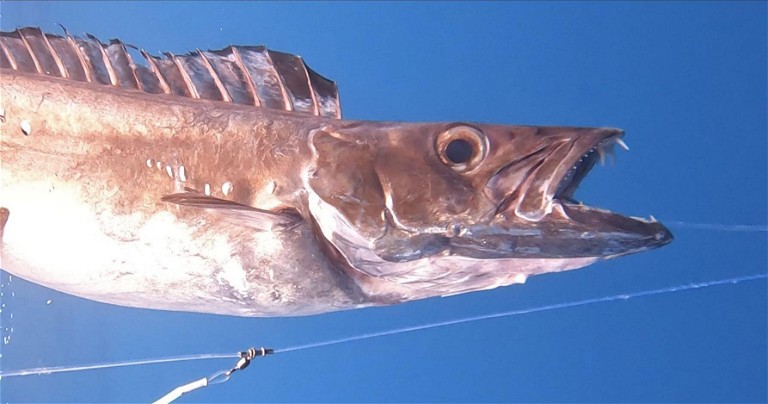
Our first location was in 280 metres. With some good sign showing, we all waited with anticipation as our lines headed toward the bottom. We were using electric reels which makes fishing this depth much easier, especially when you are trying to find the fish, as well as saving the arms on retrieving the 64oz sinker back up from the bottom!
If you drop on the right location when bluenose are feeding, you will get one almost instantly. However, nothing happened when our lines hit the bottom – not ideal! After a couple of drifts, we managed to pick up a small bluenose, but it wasn’t what we were hoping for, so we headed to another location further along the trench. Again, good sign was showing but nothing was hungry. I was starting to feel a bit of pressure building as the bin was still empty and it was now after lunchtime.
The decision was made to go back to our initial spot, as at least we knew there were bluenose there. I had more of a look around and found some bigger densities of fish in a different area from where we had tried the first time. With freshly baited squid on our rigs, they were quickly making their way back to the depths below. This time we had it right, as straight away the characteristic banging of the rod quickly indicated that we had found the bluenose. The electric reels were quickly engaged, and they took care of the hard work for us.
It was a very pleasing sight to see those first bluenose come up and I felt the weight come off my shoulders instantly – we had found the fish. We were holding on the spot with the Yamaha Helm Master system on FishPoint, so it made it easy to deploy the lines back over the side again on the same spot. As soon as the lines hit the bottom we were hooking up.
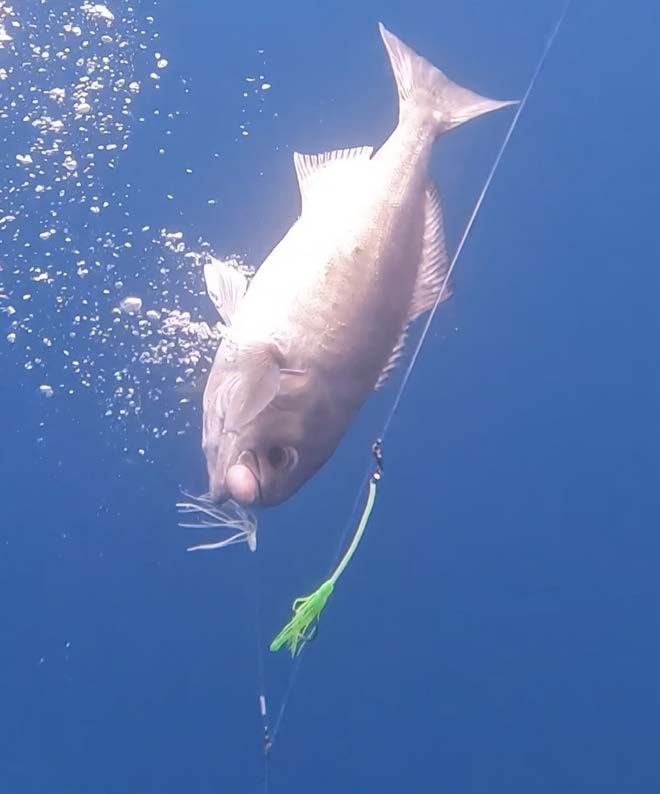
However, it was not too long before the gemfish moved in. If you don’t know what gemfish are, they are basically barracouta on steroids, but the biggest difference is that they are beautiful to eat! Their teeth are like razors and are very hard on your gear, so after a couple of fish in the bin, that’s normally enough. After moving 50 metres further to the west with the Helm Master, we were back into the bluenose and the bin was looking great.
After a big cleanup, and all the fish packed in ice, we made our way back to the bar. The swell had increased from the morning, but it was a lazy swell with a large period, and with no wind on top it made it an enjoyable trip home, surfing down some of these swells at over 30 knots.
On arrival back at the bar, the conditions were relatively good, and we had no issues as we crossed. I logged us back in with Greymouth Maritime Radio and we were soon back on the trailer, taking down the riggers and packing the boat up for the trip home. It was very good timing because as soon as we were packed up it started pouring with rain, West Coast style, which was welcomed as it helped give the boat a good wash on the way home. We said our goodbyes with Leon who headed over the hill and Pete and I made our way back to Nelson.
It was a fantastic trip, with good weather, great company and some good fishing to top it off. The bluefin did not cooperate, but that’s fishing, and the bluenose fishing was a great second prize. I’m already looking forward to the next trip out west.